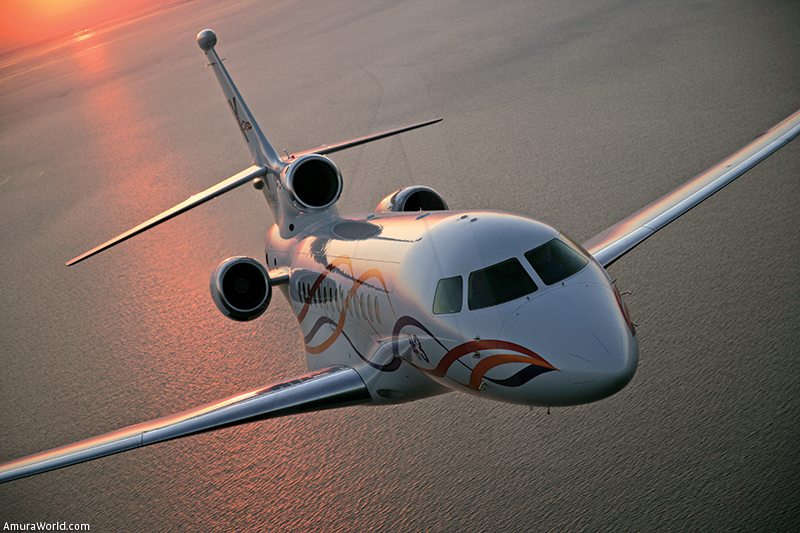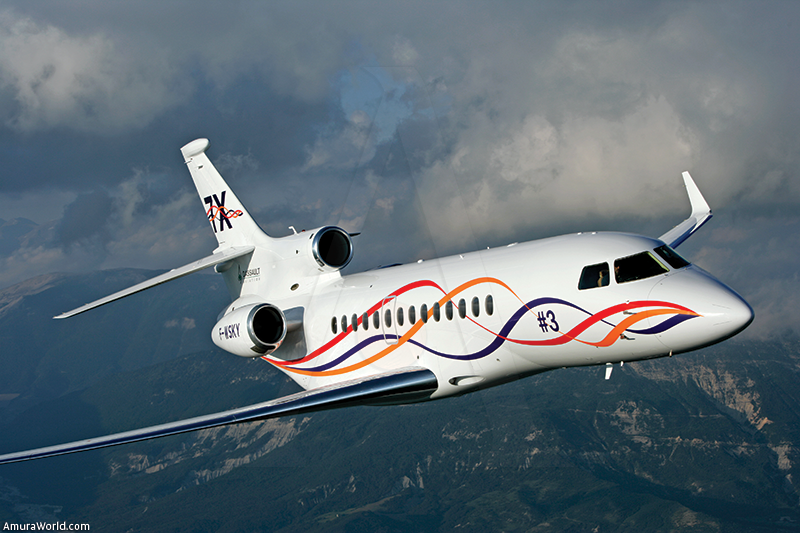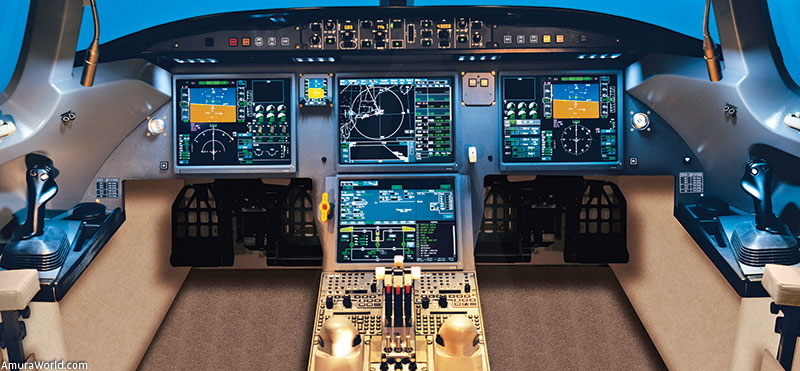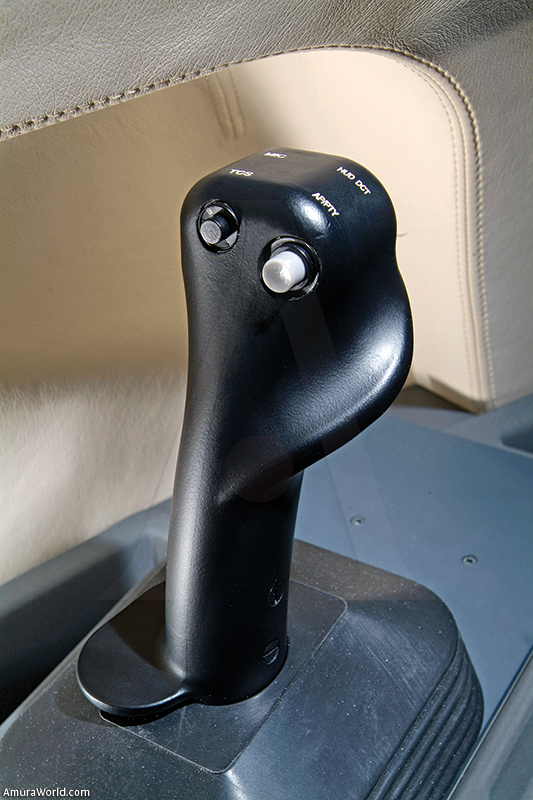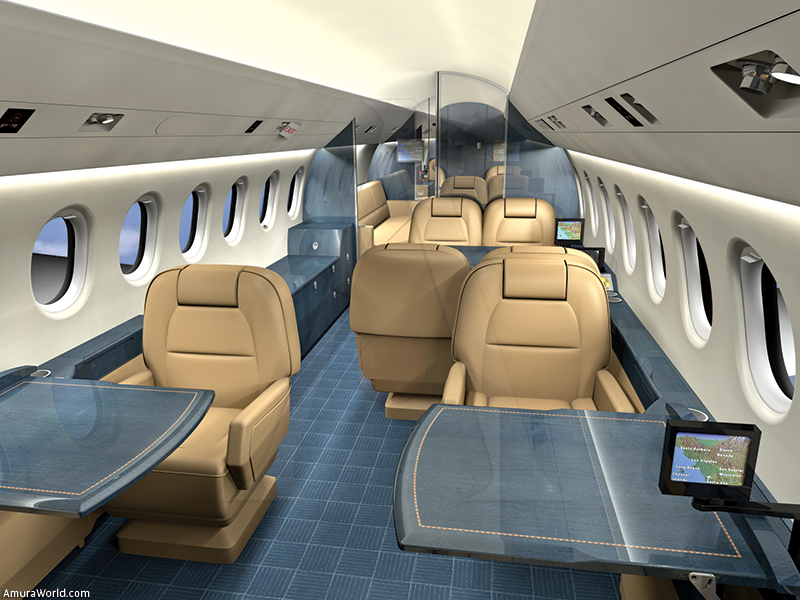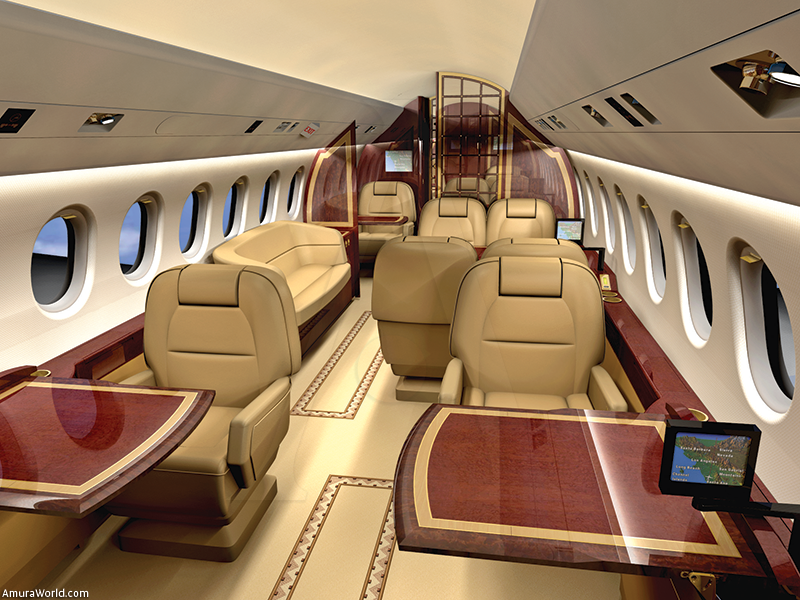Renew or Die
As all models, this one has a history. The first example was launched two years ago at the Paris Le Bourget Air Show and caught the attention for being a model totally different from everything had been seen before.
With regard to the name, John Rosanvallon, CEO of Dassault Falcon Jet, says that the “ the number 7 begins a standard for a new generation of Falcon jets. The “X” was the formula to communicate the jet’s advanced nature.
“At first we thought about giving it an other name”, added Rosanvallon, “but the word ‘Falcon’ is so vigorous by itself that we thought that any other name would dilute our brand image.”
A second office
The Falcon 7X offers a widebody cabin as generous in width. Even with all that space, the airplane’s most welcome feature may be Dassault’s breakthrough environmental system. This includes “quieting acoustics,” an advanced temperature monitoring system that allows for thermal controls to hold a precise temperature throughout the cabin and an in-flight “cabin altitude” of just 6,000 feet, 2,000 feet lower than today’s standard.
Nearly 6,000 miles
The Falcon 7X can fly faster, further and higher than any other ever made. Besides being agile and versatile, it offers unequaled performance.
It is designed to fly out of range of up to 5950 nautical miles carrying eight passengers and crew of the pilots and a steward, joining almost all the most-desired destinations at a maximum operating speed of Mach 0.9.
Personalized model
The novelty of this model is the option of personalizing it through a detailed analysis of client needs and desires.
A digital mock-up of the Falcon is created using the CATIA software (Computer Assisted Three-dimensional Interactive System) in such a way that clients can see how ideas take form before production.
Once each design detail on the computer is finalized, the real Falcon process begins.
Avionics
For quiet flights, this model offers the benefit of the intuitive Enhanced Avionics System (EASy) flight-deck, developed for the Falcon 900 EX, and included on the Falcon 900DX and the Falcon 2000EX.
Designed jointly with Honeywell, the system displays information on the flat 14.1 inch screens and allows pilots to enter data using the cursor control tool (CCD) with menu selections.
The Falcon 7X is the first fly-by-wire business jet, which offers a range of benefits such as precise control of the flight path, automatic balance adjustment during configuration changes and basic automatic pilot functions through the controller located to one side of the pilot’s cabin in order to set bearing and position.
The three Pratt & Whitney PW307A engines are the next generation of the PW300 series of engines selected for airliners and business jets.
The engines provide a new standard of cabin comfort thanks to their low noise and vibration levels. New turbine technology ensures a very low external noise level, which meets the standards expected for the next two decades.
When the Falcon 7X enters service, its engines will not require overhauling until 7,200 flying hours or more than 14 years in normal operations.
Once the aircraft is finished, the client will be invited to take part in final testing where questions can be asked about its operation. The delivery of the Falcon Golden Key means induction into the Falcon family, a membership that starts way before flying the model from the installations.
|
INTERIOR DIMENSIONS Cabin height |
|
6 ft 2 in |
|
Cabin width |
|
7 ft 8 in |
|
Passenger cabin length |
|
39 ft 1 in |
|
Cabin volume |
|
1,552 cu ft |
|
Luggage volume |
|
140 cu ft |
|
Engines |
|
Tres, Pratt & Whitney de Canadá PW307A |
|
Takeoff thrust |
|
6,402 lb each |
|
Takeoff distance |
|
5,505 ft (67,811 lb / 30,759 kg, takeoff weight with eight passengers at sea level) |
|
Landing distance |
|
689 m / 2,262 ft (38,287 lb / 17,367 kg typical landing weight carrying eigth passengers at sea level) |
|
Range |
|
9,573 km / 5,950 nm (8 passengers and three crew, Mach 0.80) |
Text: Laura Velázquez ± Photo: Cortesía Dassault.

